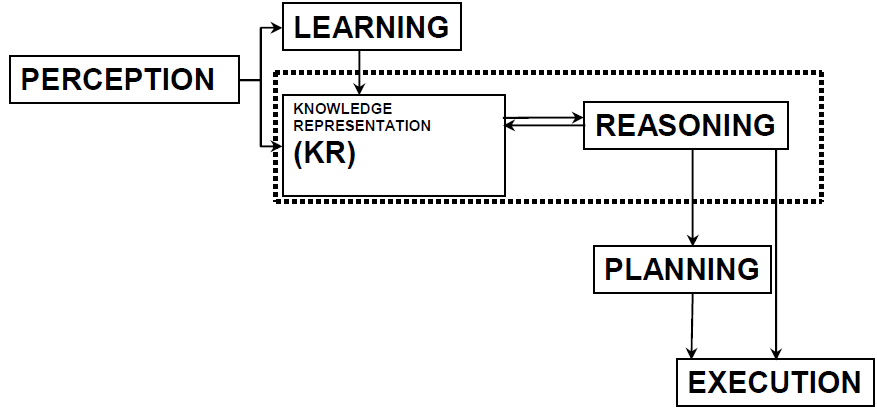SKEDSOFT
The AI Cycle: Almost all AI systems have the following components in general:
- Perception
- Learning
- Knowledge Representation and Reasoning
- Planning
- Execution
Figure 1 shows the relationship between these components. An AI system has a perception component that allows the system to get information from its environment. As with human perception, this may be visual, audio or other forms of sensory information. The system must then form a meaningful and useful representation of this information internally. This knowledge representation maybe static or it may be coupled with a learning component that is adaptive and draws trends from the perceived data.

Figure 1: The AI Cycle
Knowledge representation (KR) and reasoning are closely coupled components; each is intrinsically tied to the other. A representation scheme is not meaningful on its own; it must be useful and helpful in achieve certain tasks. The same information may be represented in many different ways, depending on how you want to use that information. For example, in mathematics, if we want to solve problems about ratios, we would most likely use algebra, but we could also use simple hand drawn symbols. To say half of something, you could use 0.5x or you could draw a picture of the object with half of it colored differently. Both would convey the same information but the former is more compact and useful in complex scenarios where you want to perform reasoning on the information. It is important at this point to understand how knowledge representation and reasoning are interdependent components, and as AI system designer, you have to consider this relationship when coming up with any solution.